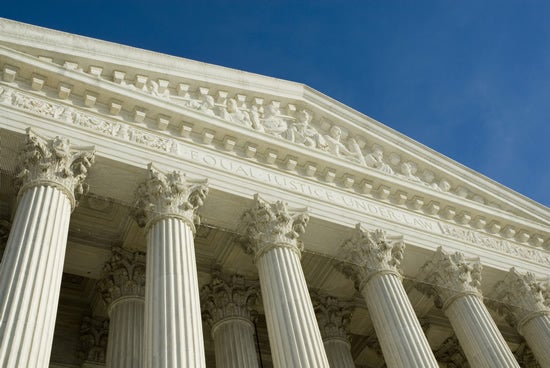Public Opinion and the Supreme Court
Elizabeth Slattery /
A recent Rasmussen poll shows that public approval of the Supreme Court of the United States is at an all-time low. Only 28 percent of those surveyed gave the Supreme Court a “good” or “excellent” rating, while the justices’ “poor” rating has risen to 30 percent. This negative rating is even higher than what Rasmussen reported last year following the decision upholding Obamacare.
Criticism of the Court spans the political spectrum, with some on the left denouncing the decision striking down part of the Voting Rights Act as the “return of Jim Crow” and some on the right condemning the decisions involving same-sex marriage as “politics, tarted up as constitutional law.” Others wonder if the Supreme Court is just a “super-legislature, deciding by majority vote what our constitutional rights are.” Whether they got the big cases right or not, should public opinion affect the justices of the Supreme Court?
This certainly isn’t the first time the justices have been raked over the coals of public opinion. After the Court issued its decision in Brown v. Board of Education declaring that school segregation was unconstitutional, “Impeach Earl Warren” (who was Chief Justice at the time) billboards could be seen throughout the South. The Court’s decision recognizing a constitutional right to abortion in Roe v. Wade led to the annual March for Life in Washington, D.C., which was attended by nearly half a million protesters this past year. And in 2010, President Obama dedicated part of his State of the Union address to publicly chastise the Court for reversing a ban on independent political expenditures by corporations and unions in Citizens United v. Federal Election Commission.
The High Court is not, nor should it be, accountable to the court of public opinion. Supreme Court justices and other federal judges appointed under Article III of the Constitution enjoy life tenure, which is intended to insulate them from the whims of the political branches of government and the fleeting passions of the people. As Alexander Hamilton wrote in Federalist 78, the independence of the judiciary is essential to the “steady, upright and impartial administration of the laws.” If judges were appointed for a term of years or elected, there would be “too great a disposition to consult popularity” instead of the Constitution and laws.
Thus, the structure of our government and the limited mechanism for removing federal judges protects the Supreme Court from public opinion. Nonetheless, it has been widely reported that Chief Justice John Roberts is “sensitive to how the court is perceived by the public.”
Did the justices rule correctly in the big cases this term? Are they affected by public opinion? These are among the questions that a panel of experts will address at The Heritage Foundation’s annual “Scholars and Scribes Review the Rulings: The Supreme Court’s 2012–2013 Term.” Supreme Court litigators Stephanos Bibas, Charles Cooper, and Tom Goldstein—along with Supreme Court journalists Jess Bravin, Adam Liptak, and David Savage—will reflect on the Court’s image, emerging trends, and whether the Court got the big cases right or wrong on Thursday, July 11, from 11:00 a.m. to 1:00 p.m. (RSVP or watch it live here.)

